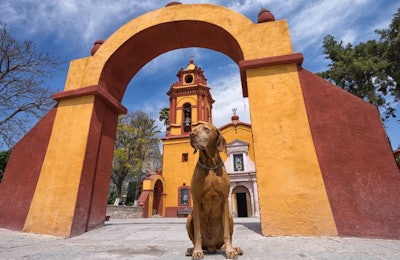
Corn’s ancient roots in Mexico provided one justification for banning cultivation of transgenic varieties in the country and ending imports by 2024. On December 31, 2020, Mexico’s government posted a ban on the cultivation of genetically modified corn, reversing a 2009 decision to allow the transgenic crops. On January 2, President Andrés López-Obrador announced the ban along with one on the use of the broad-spectrum herbicide glyphosate, which varieties of genetically engineered organisms (GMOs) are designed to resist. The decree specifically stated the ban was intended to maintain the diversidad biocultural del país (biocultural diversity of the country), among other reasons.
However, exactly what this policy change means for the pet food industry is uncertain. The decree ends the importation of genetically modified corn imports to Mexico by 2024. This would mostly affect yellow corn, as the country grows its own white corn. Yellow dent corn imports from the U.S. serve both the human and animal food markets in Mexico.
Experts on exports think the change in GMO policy is unlikely to affect finished pet foods or their ingredients. However, ambiguities remain.
"The decree does not indicate that it is for animal consumption, so I would expect it to only be corn for human consumption," Fabián Ortiz, general director of Amexfal, wrote in an email.
Currently, Mexico's corn production doesn't meet the capacity needed by the pet food industry and animal feed sectors, he said. Nor will the country have that capacity for at least a few more years.
"However, we will be attentive to modifications to the legal framework by SADER and the Ministry of Finance," he said.
The American Feed Industry Association’s international policy and trade director has been in touch with the USDA Foreign Agricultural Service (FAS) in Mexico City, Victoria Broehm told Petfood Industry in an email. However, the decree is unclear, so the FAS is still continuing to research and ask questions of the government on whether it might extend to other corn byproducts or ingredients.
Likewise, Peter Tabor, vice president of regulatory and international affairs for the Pet Food Institute (PFI), said that, while the decree language indicates that the ban applies to human food, Mexico’s agriculture ministry has yet to make a determination of the scope of the ban as it applies to animal food. When other countries have taken similar steps to limit GMO cultivation or imports, they focused more on restricting transgenics in human food than in animal feed or pet food; US food and ag producers are hopeful Mexico adopts a similar approach.
Value of corn’s crib in southern Mexico
Despite marketing claims that reject corn in dog and cat foods, researchers have found evidence that both dogs and cats can digest corn, especially in extruded pet foods. Although corn lacks the essential amino acids lysine, methionine and tryptophan, that shortfall can be compensated for by other pet food ingredients.
One of Earth’s most widely grown and productive crops, corn (Zea mays mays), likely started as little-finger-sized cobs of teosinte in southern Mexico. Over the centuries, Native farmers transformed those early ears into a staple crop. Farmers developed maize landraces, or varieties adapted to specific local conditions throughout the Western Hemisphere. Those corn harvests fueled empires from Cahokia to Cusco. Now, corn fuels much of the world, figuratively as food and literally as ethanol.
Pet food formulators and marketers may not think about corn as patrimony of the Mexican people, but corn's genetic diversity is one of the nation’s great treasures. However, like many Native treasures, corn was taken by colonizers and conquistadors, from whom it passed to the rest of the world. Still, in the multitude of corn cultivars found in Latin America, a range of genes provide everything from corn that fixes nitrogen in slimy roots to hardy drought and disease resistant varieties. However, those heirloom landraces are losing ground to hybrids, transgenics and other varieties developed outside the cultural and biological context of corn’s crib in Mexico. Just as in the United States and other regions, numerous varieties of traditional cultivars have been lost, as economic models change in rural areas. Even in those heirloom varieties that remain, scientists have found signs of transgenic corn spreading DNA into Mexican landraces, according to a report by Mexico’s Instituto Nacional de Ecología y Cambio Climático (National Institute of Ecology and Climate Change).
Along with the native corn cultivars’ cultural value, researchers and crop breeders depend on them for novel genes that could allow breeding self-fertilizing corn or varieties that can withstand a warming, destabilizing climate. Although the risk of biopiracy remains, hopefully, crop breeders and genetic engineers will share the financial wealth these genes help create for corporation with the people who created the genetic treasures. Globally, all corn farmers stand to benefit from maintaining a robust bank of maize genes in Mexico.
















